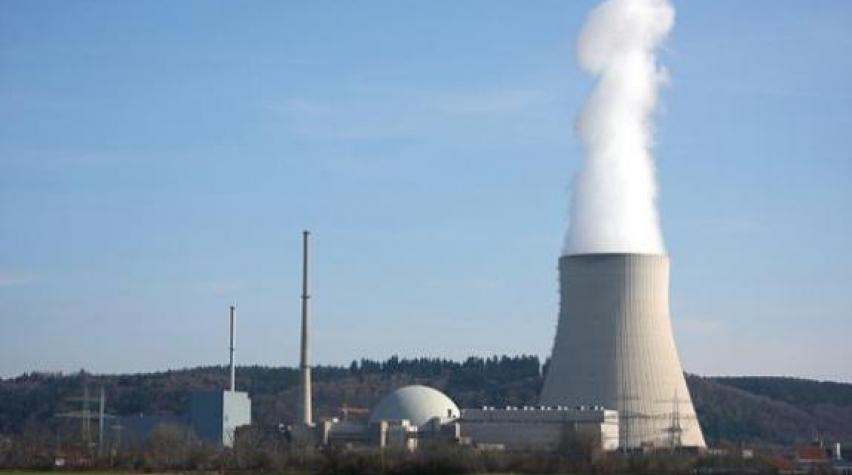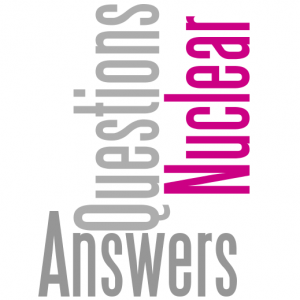

From April 15-24, we asked for questions from readers about Fukushima and nuclear energy in general. AIChE's Nuclear Engineering Division (NED) has agreed to answer questions in a series of posts. Below are the questions we received, with links to those that have been answered to date.
Questions Submitted:
Rich, a student from Chicago asks: Q: Death estimates due to Chernobyl vary widely. Some reports suggest that only 54 people died. Other studies conclude as many as 1 million. What are the more accurate numbers? View response. Richard, medic and green campaigner, Somerset UK, asks: Q: What is holding back Tepco from filtering the gaseous and water wastes on the Fukushima site along the lines outlined here. View Response. Robert, technical advisor, Argentina, asks: Q: With all the talk about risks between energy sources, has there been a systematic attempt to evaluate different energy sources based on cost per kW. For example, nuclear makes big headlines with single catastrophes like the recent event and Chernobyl. But coal claims lives in smaller, more frequent accidents. Similar with health effects, some risks are built into our social system so are not accurately accounted for. Any way to put a number on these to compare same to same? View Response. Q: In the refining industry it is common to have a HAZOP meeting when planning a new unit or system? A day or two is spent searching for potential failures and evaluating the probability of the event and potential effects. Then the failures are prioritized for being addressed by safety measures based on probability of occurrence and severity. Q: With the events as they played out, should the HAZOP program be changed or is this the a type of event that everyone needs to accept since nothing in life is 100% safe? (I am assuming they did not plan for a historic earthquake plus tsunami.) Rich, a student from Chicago asks: Q: How much uranium is it estimated to potentially exist? How many years of nuclear energy does this translate for the operation of nuclear power plants? Richard, director of engineering (chemical with Navy nuclear background), from Norwalk, CT, asks: Q: Background to question: When considering Nuclear Reactor system safeguards perhaps the most difficult scenario to design for is the total loss of cooling accident (either loss of coolant circulation pumps or breach of the primary system causing coolant to escape from the core). As we know from Three Mile Island and Current Events even a shutdown reactor continues to generate heat (decay heat). Generation III & IV plant designs attempt to address this issue by installing natural convection emergency cooling systems that require no power to operate, and also designing the cores for a negative temperature coefficient of reactivity, where if the core temperature goes up, the fission rate automatically goes down. Would such an emergency cooling system have survived the massive earthquake and tsunami experienced at Fukushima, and would it have prevented core damage and failure of the spent fuel rod cooling/containment pools? Q: What systems are currently in place in the US for emergency decay heat removal, especially the older generation II plants that are still in operation? Q: Background to question: Transport bed reactors where the reactants or catalyst are not fixed with in the reactors are becoming more popular in the chemical industry for their enhanced chemical reaction and selectivity capabilities. Could such a design be deployed in a Nuclear Reactor where the fuel is circulated with the coolant and takes on critical mass and geometry only when passing through the channels of the reactor core (fission occurs only while passing through the core) ? Q: Then upon loss of cooling or loss of primary containment the fuel coolant mixture could be "dumped" into a static quenching system (passive safeguard) or pool to better disperse the radioactive fission by products and provide enhanced decay heat removal? I know that this sounds like science fiction, and perhaps there are designs already looking at this or similar concepts, however often times its science fiction that eventually becomes science fact. Q: Current reactor core designs are very sophisticated, and automatic reactor shutdown systems are very good (and worked at Fukushima). However could a similar catastrophic earthquake at a US facility cause a sequence of unlikely failures that prevent the ability to remove decay heat from the core after the shutdown has occurred, thus leading to core failure? If so, what further safeguards could be installed to mitigate this possibility? In the process safety management world these scenarios are the so called "black swans" once thought not to exist, Very High Consequence, however Very Low Probability. What do you do to further mitigate the risk? Q: In your view, although the total loss of cooling scenario as seen at Fukushima is a very remote possibility, will this cause the public to reject Nuclear Power in the US? Juan, consulting engineer in New York, asks: Q: We know that nuclear energy has been the most efficient way to generate electricity to cover the demand of big cities. But, we found that risks are present. Therefore, my question is the following: Did you consider to design midi or micro reactors to locate them in different parts of the big cities to minimize risks? If you did the study, was this study economically feasible?
About AIChE's Nuclear Engineering Division
NED provides members, as well as the general public, with factual information on nuclear energy. It informs other members of the Institute with the achievements and problems of the nuclear energy industry. NED also encourages the application of new technologies developed in the nuclear industry and supports actions by AIChE in the field of nuclear energy.
Also Check Out our Free Archived Webinar: Fukushima Daiichi - How We Got Here and Where We're Going Presented by Dr. Stuart T. Arm of AIChE's Nuclear Engineering Division.


